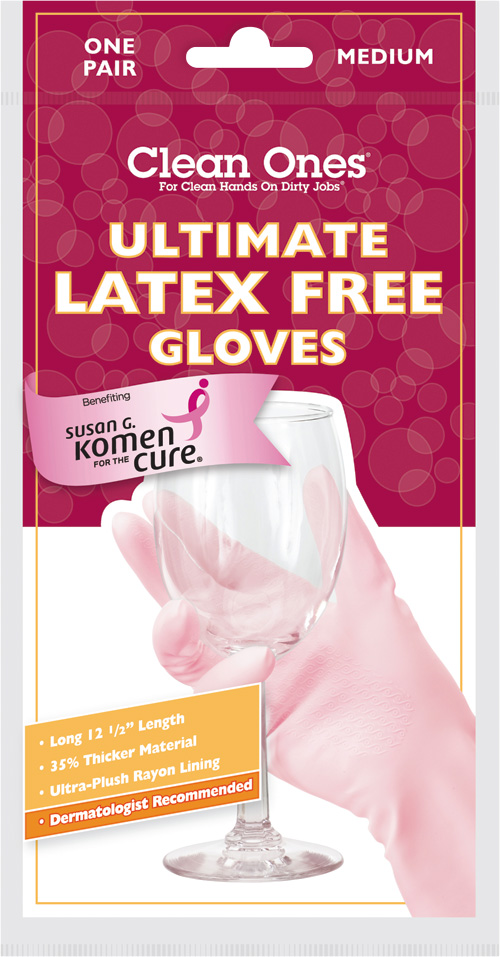 It’s pink, sleek, and form-fitting, the inside lined with a layer of rayon for extra comfort. It costs 30% more than similar products, but research says women will pay it for added comfort. And part of the sales of the $2.99 product will go to the Susan G. Komen Foundation for breast cancer research.
It’s pink, sleek, and form-fitting, the inside lined with a layer of rayon for extra comfort. It costs 30% more than similar products, but research says women will pay it for added comfort. And part of the sales of the $2.99 product will go to the Susan G. Komen Foundation for breast cancer research.
By Dan Cook
 It’s pink, sleek, and form-fitting, the inside lined with a layer of rayon for extra comfort. It costs 30% more than similar products, but research says women will pay it for added comfort. And part of the sales of the $2.99 product will go to the Susan G. Komen Foundation for breast cancer research.
It’s pink, sleek, and form-fitting, the inside lined with a layer of rayon for extra comfort. It costs 30% more than similar products, but research says women will pay it for added comfort. And part of the sales of the $2.99 product will go to the Susan G. Komen Foundation for breast cancer research.
It’s the new glove from Portland-based Clean Ones, and its creator predicts it will soon be the market leader in the reusable glove category. “This glove will really move the market,” says Clean Ones president Tim McMann.
Bold words coming from the founder of a company that employs just 14 people. But McMann has repeatedly demonstrated that ingenuity and marketing savvy can level the playing field against market giants.
Clean Ones, which had $16 million in revenue in 2010, sells more than 1 billion gloves a year, all to retailers who then sell them mostly to women who use them mostly to clean. Its major competitor, Playtex, has more than double the market share. But it’s also twice Clean Ones’ size and has access to the resources of its corporate owner, Energizer. Yet McMann is certain Playtex worries more about Clean Ones than he worries about Playtex.
“Sure, they’ve got a huge corporate owner, but we’re innovative and quick to respond to market demand,” he says.
This little glove empire, tucked away in a century-old brick building just off Broadway on SW Third Avenue, is global in scope. It has 30-plus major U.S. retail customers and the gloves are made in contract factories throughout Asia.
Ohio native McMann got his start in the automotive parts business. A transfer took him to Los Angeles, where he founded Clean Ones in 1984. He saw an opportunity in the rather mundane cleaning glove marketplace: Build a better glove and retailers might snap it up.
Retailers constantly demanded cheaper gloves. McMann resisted. He offered them features in cleaning gloves that other brands didn’t have. The retailers resisted. Then he landed Price Club as an account. He knew he had some traction.
McMann believes innovation is the key to battling the behemoths. He pulls up a timeline on his computer screen that tracks Clean Ones’ innovations through the years.
There was the “cuff logo stamp” — nothing more complicated than stamping a company name or logo on the cuff of the glove. But no one had done it before. Since Clean Ones sells under its own name and retailers’ private labels, this appealed to the retailers’ branding instincts.
Next, Clean Ones introduced product specs on packaging. Again, a simple concept, but an industry first. Then in 1988, the world suddenly discovered latex allergies. Clean Ones immediately marketed its already existing line of non-latex gloves as “latex-free,” which set off another demand uptick. He expects the “upscale” Susan G. Komen pink glove to be the next pace-setting product.
McMann, who relocated to Portland in 1996, continues to challenge the notion that household disposable and reusable gloves are mere commodity items. In May, he hired Erin Crum, a former Starbucks, Dial Soap and Craft Brewers Alliance marketing guru. Her job is to find out what motivates the buying decisions of glove users.
“We found out a lot of the added features weren’t necessary to make a sale,” Crum says. So Clean Ones streamlined.
Where will Clean Ones go next? McMann has considered new products outside of the household glove category. But, he says, Crum’s consumer research indicates there’s “so much more we can do with gloves.”
“So we’ll focus even more on gloves,” McMann says. Expanding beyond this product will have to wait until he’s exploited every square inch of the humble household
cleaning glove.



